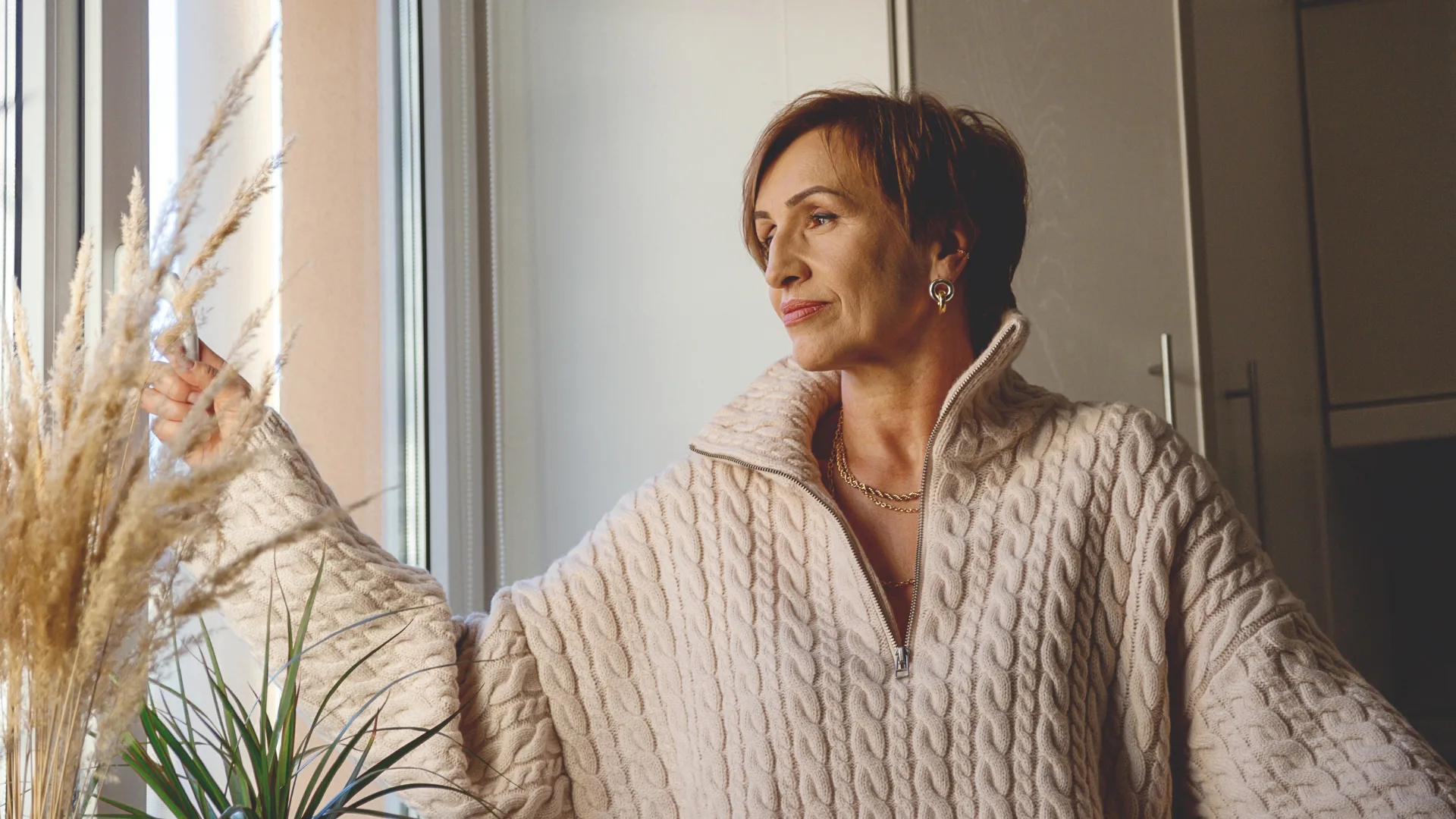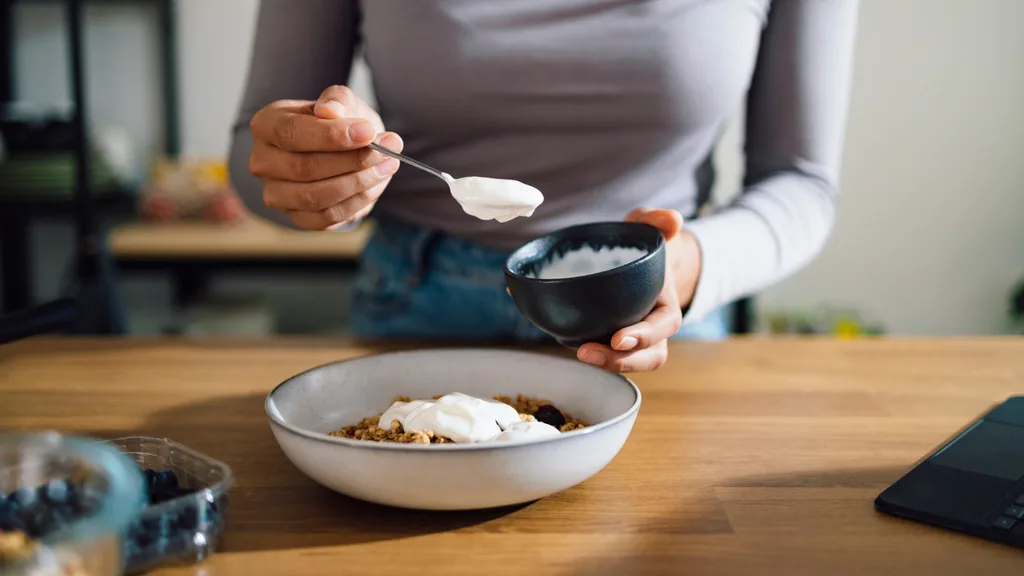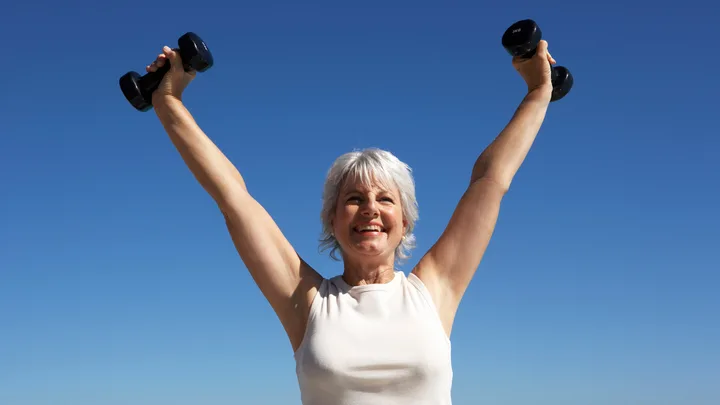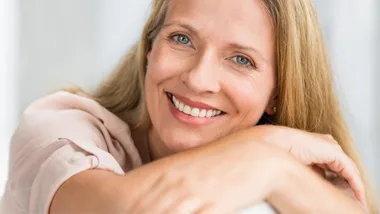For many, menopause brings hot flushes, brain fog and restless nights. But there’s another lesser-known concern that can sneak up without warning: low bone density. Osteopenia, or a gradual decline in bone mass and strength, affects an estimated 6.3 million Australians and can lead to osteoporosis, a disease where bones become porous, brittle, and more prone to fractures. You won’t feel your bones weakening, which is why it’s often referred to as a “silent disease”, with many of us not realising it’s even happening.
“A lot of women think ‘I’m young and don’t need to think about bone health yet’, or ‘only older women need to worry about bone health’, but it’s just not true,” says Priceline pharmacist Melissa Gannon.
While bone density naturally peaks in our late 20s to early 30s, it begins a slow decline from around the age of 35. This decline becomes far steeper in the years after menopause, due to declining levels of oestrogen, a hormone that plays a key role in maintaining strong bones.
When oestrogen levels drop during menopause, the balance shifts – bone is broken down faster than it can be rebuilt. Women can lose up to 20 per cent of their bone density in the five to seven years after menopause.
“Oestrogen protects our bones in a number of ways, and women are at higher risk of osteoporosis and fractures in the post-menopausal years. Women also start to lose muscle mass from the time of menopause, about 0.6 per cent each year,” explains Dr Sonia Davison, an endocrinologist at the Jean Hailes Medical Centre.
“This combination of declining bone density and a loss of muscle mass contributes to frailty in older women, unless steps are taken to protect bone and maximise muscle mass.”

In Australia, approximately 1.2 million people are living with osteoporosis. Alarmingly, 15.1 per cent of women aged 50 and over have either osteoporosis or osteopenia, with the rates climbing later in life.
According to a study published in the Journal of Bone and Mineral Research, women who hit menopause before age 45 were at significantly higher risk of bone fractures in later life. Yet many remain unaware they’re at risk until they wind up in the emergency department waiting room, often after a seemingly minor fall or bump.
The only way to reliably measure bone density is through a DEXA scan – a low-radiation X-ray that assesses bone strength and risk of fracture. It’s quick, painless and widely available through referral from a GP. Medicare covers scans for certain groups, including postmenopausal women over 70 and those with specific risk factors.
“Midlife, or around the time of menopause, is a great time to test bone density to determine your baseline levels, as we know there can be a significant decline in bone density after this time. We can intervene at this point to maximise bone health in later life,” advises Dr Davison.
The good news is that bone loss isn’t inevitable – and there’s plenty you can do to reduce your risk or manage it if you’ve already been diagnosed.
A 2022 study in Bone Reports found that targeted resistance training could significantly improve bone density in postmenopausal women.
“Incorporate weight-bearing exercises into your daily routine, such as walking, dancing, or light strength training, all of which help build and maintain bone health,” advises Melissa.
Your diet also matters. Calcium is the building block of bones, and we need around 1300mg a day post-menopause – that’s the equivalent of four servings of dairy or calcium-fortified alternatives.
“Eating a calcium-rich diet is the best way to achieve the recommended intake; however, when adequate intake is not possible, the most common supplements are calcium carbonate, calcium citrate or calcium hydroxyapatite,” says Melissa.

Healthy Bones Australia recommends a total of 1000mg of calcium per day for adults aged 19 years and older, and 1300mg per day for women aged 50 and older and men aged 70 and older.
Vitamin D, which helps us absorb calcium, is another must-have. Most of us produce it through sun exposure, but supplements can be beneficial if your levels are low. Worryingly, almost a third of Australian adults are deficient.
“It helps your body absorb calcium from the gastrointestinal tract and regulate calcium levels in the blood, as well as supports the growth and maintenance of the bones,” says Melissa.
Vitamin D is available in a variety of forms, including capsules, liquids and drops, and the recommended dose varies depending on your levels of sun exposure and whether you have a deficiency, ranging from 600IU to 2000IU per day.
Melissa notes that some medications, such as corticosteroids and certain cancer treatments, can also affect bone density, so it’s essential to consult your GP or pharmacist.
“Some medical conditions can interfere with calcium absorption, such as coeliac disease and kidney disease. Low vitamin D levels can decrease calcium absorption, as can excessive caffeine and alcohol intake,” warns Melissa, who says being proactive is key. “Weaker bones aren’t just a part of ageing, there are steps you can take at every stage in life.”

